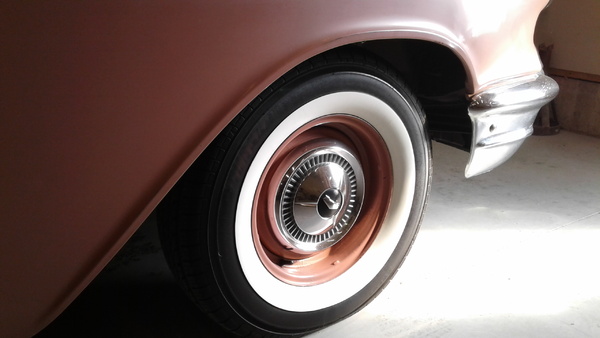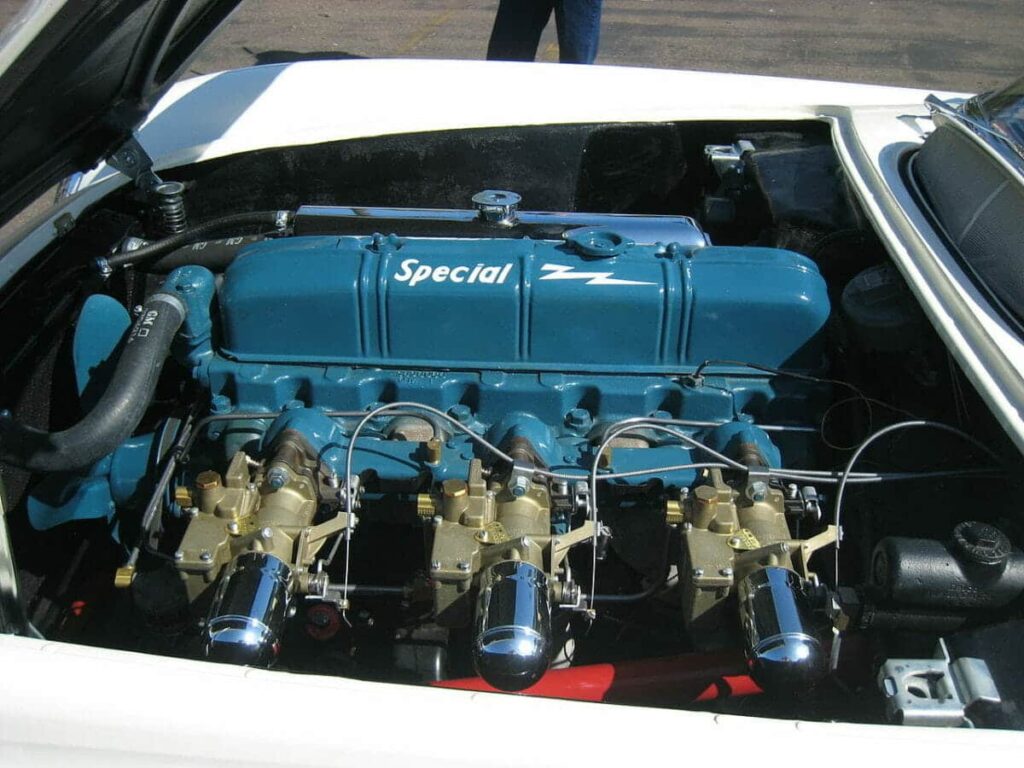When it comes to classic cars like the 1956 Chevrolet, choosing the right tire size is essential for both performance and aesthetics. One common question among classic car enthusiasts is, “Will 235/75 tires fit a 1956 Chevy?” In this article, we’ll explore the compatibility of this tire size, its impact on your vehicle, and factors to consider when making your choice.
In this article we will discuss about “Will 235/75 Fit a 1956 Chevy”.
Understanding Tire Size:

Tire sizes are represented in a specific format, such as 235/75. The first number (235) indicates the tire’s width in millimetres, while the second number (75) represents the aspect ratio, or the height of the sidewall as a percentage of the width. For instance, a 235/75 tire has a sidewall height that is 75% of 235 mm. This sizing affects not only fitment but also performance characteristics, including handling and ride comfort. Understanding tire size is crucial for selecting the right tires for your vehicle.The width in millimeters and the second indicates the sidewall height as a percentage of that width.
Stock Tire Size for a 1956 Chevy:
The stock tire size for a 1956 Chevy typically ranges from 6.70-15 to 7.10-15, which translates to approximately 205/75-15 in modern tire sizing. These original sizes were designed to provide a balance of performance, comfort, and aesthetics suited for classic cars. Switching to a 235/75 tire represents a significant increase in width, which can impact fitment and handling.
It’s important to consider how this change might affect the vehicle’s dynamics and overall look. Always check compatibility with your specific
Will 235/75 Fit a 1956 Chevy?
Fitment:
- Wheel Wells: The 235/75 tire may fit within the wheel wells of a 1956 Chevy, but this depends on the specific model and any modifications made to the vehicle. It’s important to check the clearance, especially when turning or going over bumps.
- Rim Width: Make sure your rims are compatible with a 235 width tire. Ideally, rim width for this size should be between 7 to 9 inches.
- Suspension: If your Chevy has been lowered or modified in any way, the fit may vary. Adjustments to the suspension could either increase or decrease clearance.
Performance Considerations:

- Handling: Wider tires can provide improved traction but may also affect handling characteristics. You might notice changes in steering response and ride comfortSwitching to 235/75 tires on a 1956 Chevy can enhance handling by providing increased traction and stability during cornering
- Speedometer Accuracy: Changing to a larger tire can affect your speedometer’s accuracy. Make sure to recalibrate if necessary.Changing to 235/75 tires on a 1956 Chevy can affect speedometer accuracy, as the larger tire diameter alters the distance covered per rotation.
- Fuel Efficiency: Wider tires can increase rolling resistance, potentially impacting fuel economy.Upgrading to 235/75 tires on a 1956 Chevy may reduce fuel efficiency due to increased rolling resistance associated with wider tires.
Pros and Cons of Using 235/75 Tires:
Pros:
- Improved Traction: The increased width can enhance grip, especially in wet conditions.
- Aesthetic Appeal: Wider tires can give your classic Chevy a more aggressive stance and improved visual appeal.
- Improved Traction: The wider contact patch enhances grip on the road, particularly beneficial in wet or slippery conditions, improving overall safety.
- Aesthetic Appeal: Wider tires can give your classic Chevy a more aggressive and stylish stance, enhancing its visual presence and appeal at car shows.
- Stability During Cornering: Increased tire width provides better stability and reduced body roll during turns, leading to a more confident driving experience.
Cons:
- Clearance Issues: There may be potential rubbing against wheel wells, especially during sharp turns.
- Altered Performance: Handling and steering may feel different, and recalibration of the speedometer may be required.
- Clearance Issues: Wider tires may rub against wheel wells, especially during sharp turns or when the suspension compresses, potentially leading to damage.
- Altered Performance: Handling characteristics may change, with some drivers experiencing heavier steering and altered responsiveness, which could affect driving enjoyment.Improved Traction.
- Aesthetic Appeal: Wider tires can give your classic Chevy a more aggressive and stylish stance, enhancing its visual presence and appeal at car shows.
- Stability During Cornering: Increased tire width provides better stability and reduced body roll during turns, leading to a more confident driving experience.
FAQs:
1. Can I use 235/75 tires on my 1956 Chevy?
Yes, 235/75 tires can fit a 1956 Chevy, but you’ll need to check for adequate wheel well clearance and rim compatibility. It’s important to measure the available space to avoid rubbing during turns.
2. Will wider tires improve handling?
Yes, wider tires like 235/75 can enhance traction and stability during cornering, but they may alter steering response. This can provide a sportier feel, but some drivers might find the steering heavier at low speeds.
3. How does changing tire size affect speedometer accuracy?
Switching to 235/75 tires can lead to inaccurate speedometer readings, so recalibration is recommended. An incorrect speedometer can affect your driving experience and lead to speeding violations.
4. Will my fuel efficiency decrease with wider tires?
Yes, wider tires may increase rolling resistance, potentially reducing fuel efficiency compared to stock sizes. While the impact may vary, it’s something to consider if you’re looking to maximize mileage.
5. Do I need to modify my suspension for 235/75 tires?
Modifications may be necessary depending on your vehicle’s current setup, especially if it’s lowered or has a different suspension system. Consulting with a professional can help ensure the best fit and performance.
Conclusion:
In summary we have, while 235/75 tires can potentially fit a 1956 Chevy, it’s crucial to consider the specific model, any modifications, and how the new tire size may affect performance and aesthetics. Always consult with a tire professional or mechanic for personalised the advice and to ensure a safe and suitable fit for your classic car.